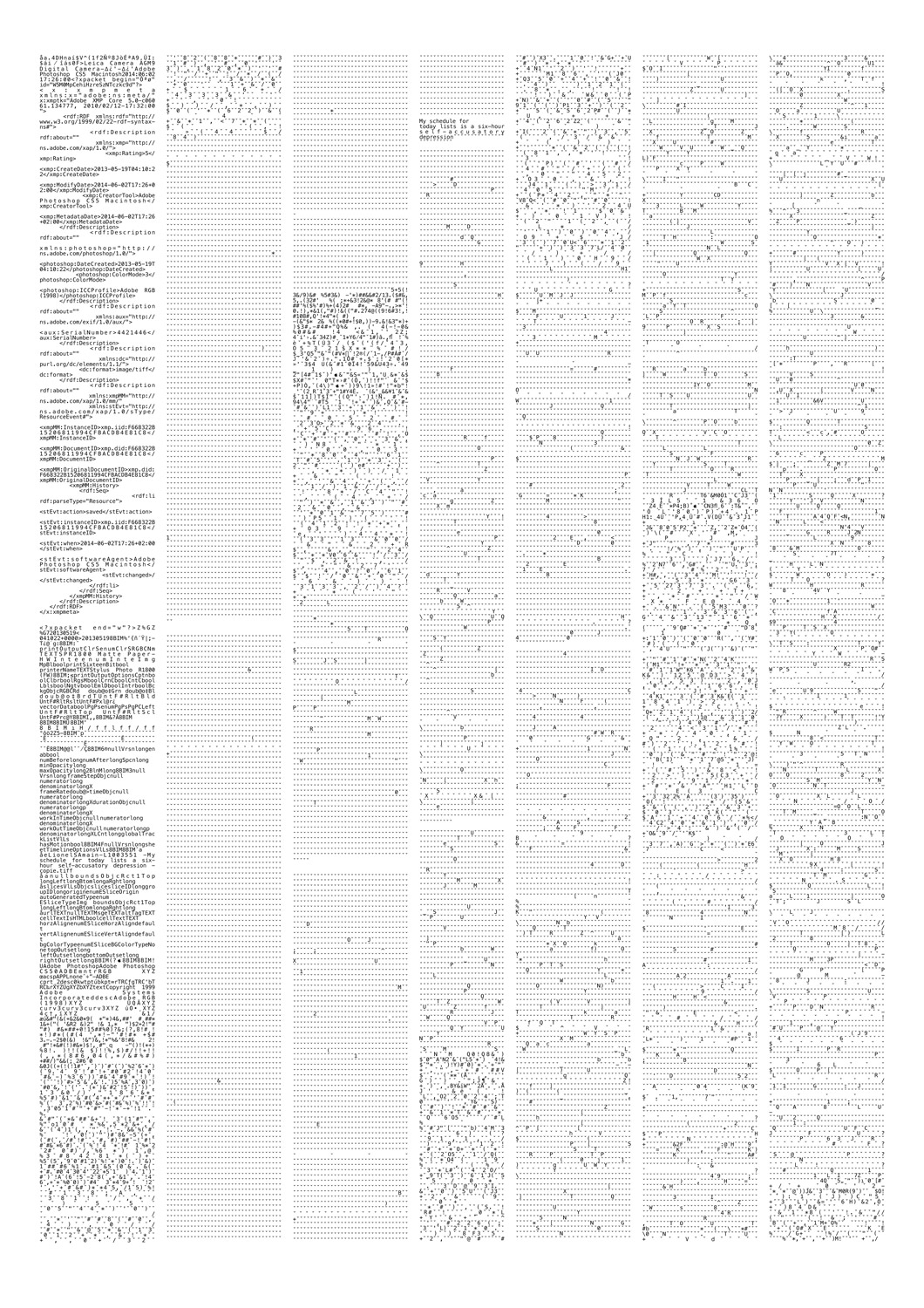CRYPTOGLYPHES*
Visual puzzle games
*Cryptoglyphes are aged, enciphered photographs, non figurative and coulourful images, exploring the idea of vestiges and remnants in the digital times of photography. They are images wherein the mind can wander, looking for the original photograph.
Over the years, I have made a careful selection of my pictures, creating a collection of meaningful and beloved images that I keep for my eyes only in the secret of my computer’s buried folders.
I rewrite their computerized langage, adding by hand words sentences, poetry and quotations, directly into the code until the result reflects my state of mind, as I used chemical, brushes and scissors on celluloid film.
Cryptoglyphes are what I call the result. They are aged, enciphered photographs, non figurative and colourful images.
An interesting paradox lays in the concept of future: it leads to vestiges and remnants, because that’s as far as the future will go.
Everything will decay according to a relatively long curve. This is a disturbing law for what we are and where we live.
But digital world doesn’t live under the same rule. A digital picture can’t show its age.
Still, I bury clues to transform the image into a puzzle game wherein the mind can wander and look for the original picture, the cryptoglyphe used to be.
WHAT HAPPENED TO PHOTOGRAPHY SINCE IT BECAME DIGITAL?
How was it before digital times?
Once upon a time during its analogic era, photography mimicked life in its organic decaying curve. It could age, get wrinkles, fall sick or die abruptly. But even then, it was still materials and could be touched and used whatever its fate. For exemple, I could cut a film in half, I still would get two pictures, vestiges of a former photograph.
What is the nature of vestige in the digital times of photography, when images are intangible and made of binary langage? What happens when the electronic heart of the computer misses a bit? The image is gone.
Unlike us, digital photography won’t decay but balance on the binary rope. For a digital file, it is literaly to be or not to be.
Yet, I want to shape it accordingly to my desire. I want it to be a mirror of our lifes. We won’t vanish into thin air on a drop of a hat but we will disappear slowly, changing bit by bit.
HOW COULD THE GIST OF DIGITAL PHOTOGRAPHY FOLLOW THIS PATTERN?
Cryptoglyphes are part of that lenghty quest, exploring the idea of vestiges in digital photography mimicking life.
A cryptoglyphe is displayd next to an other image which shows the code of the cryptoglyphe. That’s the name of the cryptoglyphe.
Millions of pictures are taken everyday in the world. Thousands of them are seen by you every day, as free as the air you breath.
And still, the most valuable part of a photograph is what it doesn’t show.
What if the most valuable picture you could have was the one you can’t see?
Every Cryptoglyphe is a puzzle. This is a game where you’ll have to find the origin and the meaning of the image. Plain and simple.
You’ll be wondering for the clue to discover the invisible photograph. The invisible is the value.
Therefore, there will be only one winner for this game. There is only one print of the matrix photograph for any cryptoglyphe. Only one person will get the opportunity to see it.
It will be like passing a secret to your ear and I’ll let you free to dispose of it as it pleases you.
Technical details
In 2015, there are 12 cryptoglyphes.
Each one, signed and numbered exists in two sizes:
40 x 60 cm, edition of 50
60 x 80 cm, edition of 5
For every cryptoglyphe, there is its original photograph, its matrix picture. The print size of the matrix image vary from 40 x 60 cm to 90 x 120 cm.













